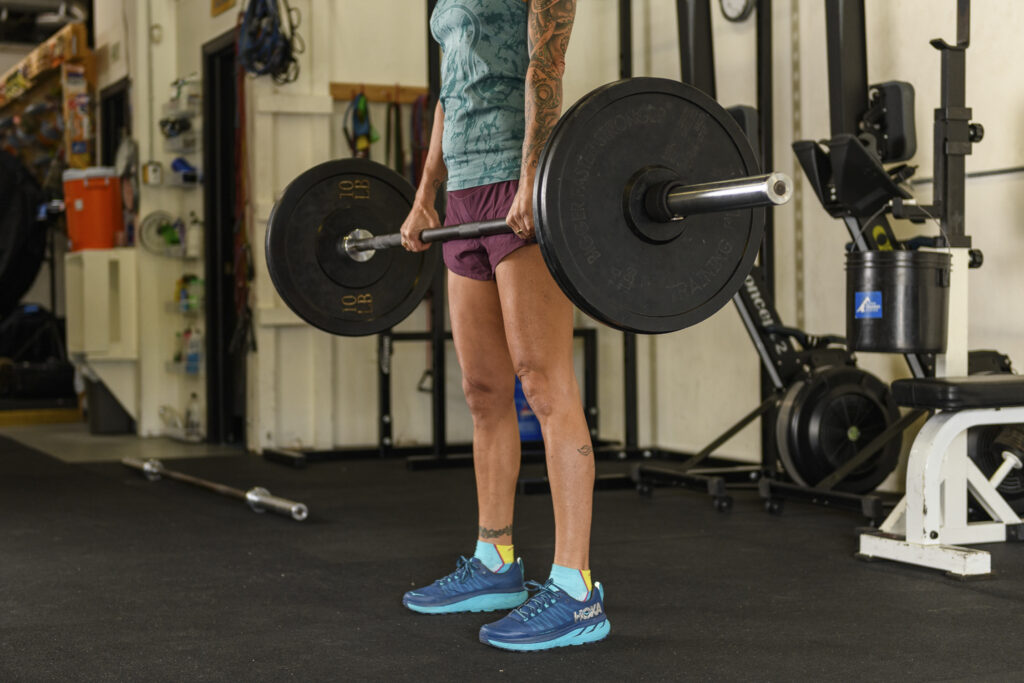One of the most important points to consider when designing a strength program is the overall load volume the athlete will experience. Load volume, for the uninitiated, is a simple calculation of the amount of weight on the bar multiplied by the amount of times the weight is lifted. For example, if an athlete squats 200 pounds for a single set of 10 reps, the load volume for that set is 2,000 pounds. If the athlete uses that same weight for three total sets of 10 reps, the load volume becomes 6,000 pounds (200 x 10 x 3). As you consider load volume across multiple sets, multiple exercises, multiple sessions, or even multiple weeks and months, you can see how this adds up over time.
Set Theory
When discussing types of sets, what I’m really getting at is the way in which the athlete proceeds through an exercise prescription on a given day. There are many different ways to do this depending on how complicated you want your program to become: straight sets, ascending sets, descending sets, wave sets, density sets, rest-pause sets, drop sets—the list goes on. Here I will focus on two of the most common and most powerful types of sets: straight and ascending.
Straight Sets
Generally speaking, straight sets are the first type of set design an athlete is exposed to when starting strength training. A prescription will look something like this:
Back squat 300×5 / 300×5 / 300×5
Because the athlete uses the same weight for all three sets (i.e., proceeds in a straight line), this is a straight set prescription. There’s really no need to complicate things: straight sets indicate that the athlete will use the same weight for all prescribed sets.
A Word of Caution
While straight sets are attractive in their simplicity, they can become aggressive very quickly. Imagine a traditional 5×5 approach for an athlete using heavier weights, say a back squat of 350 pounds. If he utilizes a straight set approach for all five of his sets, he will end up squatting 350 pounds for 25 total reps—a load volume of 8,750 pounds for a single exercise. Moreover, because of the taxing nature of each set, he can be expected to require upward of 4 to 5 minutes of rest before completing his next set. It may take him close to an hour to complete his prescribed sets—and that’s just for the first exercise of the day! Plus he’ll be crushed for the next day’s training.
Ascending Sets
An ascending set approach mitigates the problems of time management and excessive fatigue. As with straight sets, ascending sets are exactly what they sound like: they ascend in weight across each working set. A prescription will look something like this:
Back squat 225×5 / 275×5 / 300×5
Because the weight changes with each set, the overall load volume changes as well. In this example, the athlete will handle a total of 4,000 pounds across all three sets.
Wait a Second…
I know what you’re thinking. In the ascending set example, the athlete will handle less than half of the total weight of the straight set example. Surely this means he’s sacrificing potential gains by moving less weight!
If we’re just considering a single session, you’re right. However, when thinking about set theory, we must consider the long-term development of the athlete. While the ascending set approach may limit the athlete’s load volume for a particular day, it allows him to recover much more efficiently and come back for high-intensity sessions with more consistency. Over time, this means he’ll end up handling a heavier load and moving more weight, not to mention be in a better position to excel at the rest of his training program.

Which One Is Better—Straight or Ascending?
I hesitate to say that one type of set theory is always better or worse than another. In reality, it depends on what you’re trying to achieve with your design.
As a general rule of thumb, if I’m prescribing three or fewer working sets, I’ll shoot for straight sets so that overall load volume can stay relatively high. I find that with fewer sets there’s less of a risk of overdoing it on a given day. On the other hand, if I have a guy working with four or more sets, I’ll lean toward the ascending approach.
Where this gets a bit weird is when we’re working with specific sub-maximal loads. Power and speed-based work are both examples of this.
Every minute for 10 rounds, complete 2x power cleans at 75% 1RM
Though this is written slightly differently than the previous examples, you’ll notice upon closer inspection that these are actually straight sets. It makes sense to choose this option over an ascending set approach because I want the technique sustained at a specific percentage.
So, ultimately, it depends.
For athletes in general—and tactical athletes in particular—I’d recommend biasing toward ascending sets because of the higher volume of additional concurrent work that’s required to maintain peak performance. You’ll often find that if you try to run straight sets all the time, you won’t have enough gas left in the tank for mixed-modal aerobic intervals or high-intensity anaerobic work. Bottom line: Play it safe, consider the long game, and look for smaller, more sustainable progress over shorter, less sustainable gains.
This article was originally published by Drew Hammond.
You might also be interested in:
Strength and Mobility for the Aging Athlete
Special Operations Training: The Aerobic Way
Proven Training Methods for a Tactical Athlete
2-week Body Weight Only Training Plan

